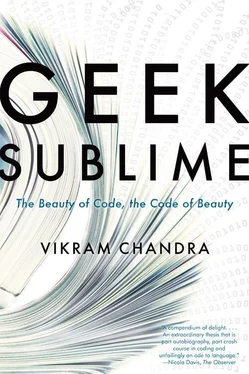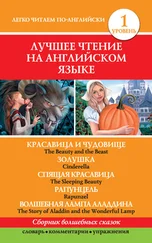So, why does transcendent Chiti blossom into immanent reality? Because, as Harsha Dehejia puts it, “ vimarśa acts spontaneously and with freedom, it possesses not an act of will but play, not the expression of a lack, but the display of fullness, its action termed kriyā or spanda or svāntantrya , meaning spontaneous and free action rather than karma or volitional action.” 14All creation is krida , the spontaneous play of delight, a game. For pleasure, Chiti hides herself and reveals herself.
One of the ways in which we know Chiti every day is in our recognition of the reality of other people’s individual subjectivities. Because we are aware of our own freedom ( svatantrya ) as subjects, because we are aware of our own self-awareness, we make a guess ( uha ) about the freedom inherent in other subjects, outside of one’s own individuality. 15And this theory of mind, this “awareness of the others’ existence is already a partial recognition of the universal Self.” The reality of Chiti also accounts for intersubjectivity: “If several subjects appear to share a single object of perception,” Isabelle Ratié explains,
it is not because this object would have an independent existence outside of consciousness, as the externalists contend; nor is it because of a perpetual accidental correspondence between various particular illusions belonging to each cognitive series, as [the Buddhist] Dharmakīrti explains … rather, it is due to the absolute freedom of the single infinite consciousness, which is able both to present itself as scattered into a multiplicity of limited subjects, and to manifest its fundamental unity in these various subjects by making them one with respect to one particular object. 16
The task of the seeker after truth, then, is merely one of recognition: recognition of the nature of the limited self and of that universal self, and recognition that the individual self is Chiti , the macrocosm. You already know you are Chiti , but you have forgotten: “I am free because I remember.” All aesthetic and ritual practices move toward this recognition, which is not merely conceptual but deeply experiential. Rasa is a recognition, a recognition of what you have forgotten, that you are blissful consciousness itself.

The Trika-Kaula lineage is infamous for its chakra puja , the circle rite in which a group of male and female initiates engaged in sex with non-spousal partners. Ritualized sex can move one past the limited self, but what is desired is very different than an “intimacy” with a specific other person. Abhinavagupta says in the Tantraloka :
Consciousness, which is composed of all things, enters into a state of contraction due to the differences generated by separate bodies, but it returns to a state of oneness, to a state of expansion, when all of its components are able to reflect back on each other. The totality of our own rays of consciousness are reflected back one on the other when, overflowing in the individual consciousness of all present as if in so many mirrors, and without any effort whatsoever in an intense fashion, it becomes universal. For this reason, when a group of people gather together during the performance of a dance or of song, etc., there will be true enjoyment when they are concentrated and immersed in the spectacle all together and not one by one … but if even one of those present is not concentrated and absorbed, then consciousness remains offended as at the touch of a surface full of depressions and protuberances because he stands out there as a heterogeneous element. This is the reason why during the rites of adoration of the circle ( cakra ) one must remain attentive and not allow anyone to enter whose consciousness is in a dispersed state and not concentrated and absorbed, because he will be a source of contraction. In the practice of the circle ( cakra ) one must adore all the bodies of all those present … since they have all penetrated [into] the fullness of consciousness … they are in reality as if they were our own body. 17
The paradox is that once this recognition of self as the vast, primal creative consciousness takes place, nothing changes materially. Multiplicity does not disappear: the universe is not an illusion, it is the manifest form of Chiti , and it is as it is. There is no other better place to go to, no heaven. There is nothing to attain that is not already yours. There is nothing to avoid. In liberation, nothing has been gained and nothing has been lost. You have just remembered something, recognized what you have always been. The only thing that has changed is your awareness of your own fullness, your bliss. In Pratyabhijna , “the primal existential fact is not that of suffering, but that of bliss.” And, as Ratié remarks:
compassion is not primarily the acknowledgement of the others’ pain —which is to say, according to an equivalence drawn by these [ Pratyabhijñā ] philosophers themselves, the acknowledgement of the others’ incompleteness ( apūrṇatva ) — as it is in Buddhism; on the contrary, it is primarily the awareness of one’s own completeness or fullness — of one’s own bliss. Helping the others is no longer an attempt to fill whatever incompleteness afflicts the others: it is a joyful activity that is not determined by any lack or need and has no other cause besides one’s own fullness, because there can be no selfless activity without the blissful consciousness of one’s own completeness, and because this blissful consciousness necessarily results in an action aiming at the others’ interest. 18
The person who has realized an identity with the Absolute, Abhinavagupta says, “by virtue of which he is full and perfect, has clearly only this left to do, namely — attend to the well-being of the world.”

In Abhinavagupta’s cosmology, the one supreme consciousness is a “She.” As Anuttara, she is figured as the Solitary Heroine; as Kali, she absorbs and transcends time. 19And during the chakra puja , within the circle, there was supposed to be no caste or social differentiation, and the women were worshipped as goddesses. Tantric knowledge and ritual — unlike the Vedic texts and practices — were available to all, regardless of status.
How much actual freedom or equality these philosophical systems brought to the underclasses and women is a matter of debate. One reading of the history suggests that low-caste and female Tantrics merely became instruments through which upper- and middle-caste men, now organized into yet another secretive elite, indulged in narcissistic self-exploration and hedonism; all the other participants were mere objects. It has even been alleged that all the women involved in the rituals were prostitutes. And there is a palpable machismo in some of the Tantric texts; the male hero practices Extreme Tantra, he fears nothing, he seeks out powerful and terrifying feminine forces and subjugates them with the power of his mantras, all human women are attracted to him and are susceptible to his charms. His tantric practice gives him tremendous magical force, and he is feared and revered.
But to regard myriads upon myriads of Tantric practitioners as mere tools of the privileged would be — I think — an error.
Abhinavagupta insists that we become aware of others as independent subjects when they resist our attempts to objectify them, to read them inferentially as purely the product of deterministic systems — that is, we know they are subjects when we sense in them the same freedom ( svatantrya ) that we are aware of within ourselves. To say that “X is a subject” is finally
Читать дальше













